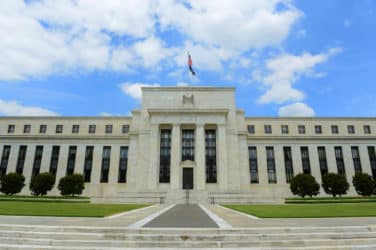

Jonathan Kellner, chief executive of Members Exchange, said the new venue will increase competition and lower fees for the whole market as participants questioned the need for more US equity exchanges.
MEMX becomes the fifteenth US equity exchange this week, with the trading of seven symbols. The Long-Term Stock Exchange was the fourteenth when it went live this month and MIAX PEARL Equities is slated to begin trading on September 25.
MEMX IS LIVE: We are pleased to announce that the Members Exchange has officially launched. The 50 firms on our platform can now begin trading in seven symbols.https://t.co/6on5lS2vDi pic.twitter.com/cOhEzYqROy
— MEMX (@memxtrading) September 21, 2020
In the second phase of its rollout MEMX will trade all National Market System listings.
Kellner spoke on a panel at the SIFMA Equity Market Structure Conference last week. He said: “There is a lack of competition in US equities as 97% of flow goes to three companies and only five exchanges have more than 2% market share.”
MEMX was formed last year by a group of financial firms. In May the exchange announced it had raise strategic financing with BlackRock, Wells Fargo, Flow Traders, Manikay Partners and Williams Trading closing the round at more than $65m (€55m). Previous investors in the round were J.P. Morgan, Goldman Sachs and Jane Street. The latest round took the amount invested since inception to more than $135m.
Kellner said: “MEMX was launched as our members are excited to see competition, to give them a voice in the debate and help the industry. The exchange will put pressure on fees and encourage others to innovate for the good of the whole market.”
This month MEMX unveiled its inaugural fee structure with no pricing tiers or charges for market data or connectivity. Members pay 25 cents per 100 shares to remove liquidity. Liquidity adders will be rebated 29 cents per 100 shares for displayed volume and 20 cents per 100 shares for non-displayed, including mid-point, volume.
Bryan Harkins, co-head of markets division at Cboe Global Markets, said on the panel that trading fees will eventually fall to zero and industry will move to subscriptions, such as for music streaming services.
“MEMX fees are already negative for the biggest market participants,” Harkins added. “Every new exchange has to build in non-transactional revenues from years three to five.”
Mehmet Kinak, global head of systematic trading and market structure at T. Rowe Price, said the fund manager was looking for innovation.
“I do not see much innovation in the three new exchanges but there will be more complexity in connectivity and data,” Kinak added. “They have different pricing models but I struggle to see immediate benefits.”
Kinak continued that he would prefer new entrants to challenge data and connectivity charges.
Kellner said: “MEMX will reduce costs for the whole industry which you will see over time.”
Rich Steiner, head, client advocacy and market innovation at RBC Capital Markets, said on the panel that the bank supports competition that puts the emphasis on innovation. He gave the example of the UK’s Aquis Exchange, which has a subscription model, and IEX Group, which is introducing a new Discretionary Limit, or D-Limit, order type to encourage members to submit more displayed limit orders to the exchange.
“Long Term Stock Exchange has gone live and LTSE’s technology challenges have impacted the market,” Steiner added. “We are mindful of the cost of new exchanges and the need for a minimum standard of trading.”
OneChronos ATS
In addition to new exchanges, new order types could be launched in the US market.
Cboe Global Markets is waiting for regulatory approval to launch periodic auctions after success in Europe with the mechanism. Periodic auctions last for very short periods of time during the trading day and are triggered by market participants, rather than the venue, helping them find liquidity quickly with low market impact, while prioritizing size and price.
OneChronos Markets, the broker-dealer subsidiary of Silicon Valley funded start-up OCX Group, is aiming to launch an alternative trading system that uses proprietary artificial intelligence to execute ’smart market’ auctions.
Rather than being triggered by market participants, the auctions run at approximately 100 milliseconds throughout the day and allow for expressive bidding i.e the trader can specify constraints such as only buying a certain stock if they can sell some other shares. Each auction looks for the combination of “winning” orders and per-security clearing prices that will result in the most price improvement dollars cleared, taking into account all orders’ constraints.
Jesse Greif, chief operating officer at OneChronos, told Markets Media that the ATS is likely to go live in the first quarter of next year.
Greif said: “The average trade size out there is 145 shares and we wanted to incentivise larger trades through expressive orders. They have less market impact and less information leakage.”
The ATS is fully non-displayed, there are no data feeds and there are multilateral fills.
“We prioritise fairness over speed so it is more of a level playing field,” added Greif.
Match priority is based on aggregate notional price improvement contributed with all matches within or at the National Best Bid and Offer at a single clearing price per symbol.
Greif continued that expressive bidding also allows substitutions, which increases the chances of matching. For example, a dealer can specify that they want to trade any one of 10 technology stocks at midpoint or better, up to a certain size.
“We are continuing to talk to the buy side and getting banks prepared, connected and tested,” Greif added. “We are also setting up coding templates with examples of a number of expressive orders.”
Data feeds
MayStreet announced it has successfully completed testing of the MEMX and MIAX PEARL equities data and will support clients trading on both their launch dates with top-of-book and full depth-of-book feeds.
Michael Lehr, MayStreet chief technology officer and co-founder, said in a statement : “With the launch of two new high-profile US equity exchanges, we’re pleased to be ready for day one at each and help our clients ensure that they are meeting their best execution obligations.”










